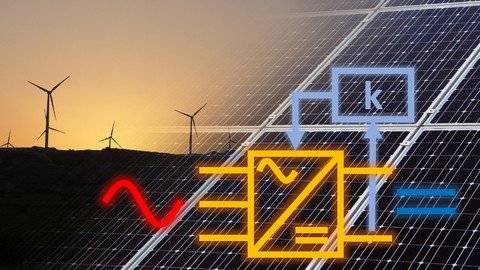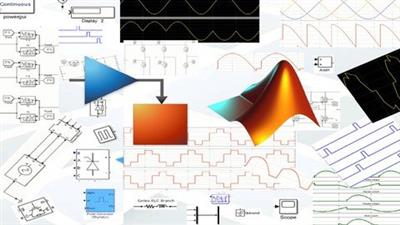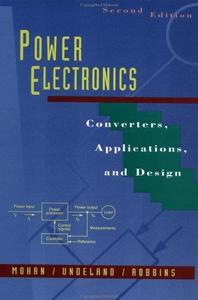Udemy - Basics of Power Electronics
"softddl.org"
15-11-2021, 12:55
-
Share on social networks:
-
Download for free: Udemy -
-

MP4 | Video: h264, 1280x720 | Audio: AAC, 44.1 KHz, 2 Ch
Genre: eLearning | Language: English + srt | Duration: 57 lectures (17h 20m) | Size: 9.1 GB
Si, SiC, GaN, LTSpics, DC/DC converters, Inverters, power dissipation, thermal stresses

MP4 | Video: h264, 1280x720 | Audio: AAC, 44.1 KHz, 2 Ch
Genre: eLearning | Language: English + srt | Duration: 57 lectures (17h 20m) | Size: 9.1 GB
Si, SiC, GaN, LTSpics, DC/DC converters, Inverters, power dissipation, thermal stresses
What you'll learn:
This course introduces you to the basics of Power Electronics including switches, Inverters, DC/DC converters and all that supported by LTSpice
You will be able to calculate the power dissipation and thermal stresses for different group of waveforms on switches
You will be able to analyse the DC/DC Converters: Buck, Boost, Buck Boost
You will be able to analyse the inverters and the current flow in bridges
You will be able to use LTSpice to test and design different converters and assess its effeciency
Requirements
The learner should know basic Electronics
Description
This course introduces you to the basics of Power Electronics including switches, Inverters, DC/DC converters and all that supported by LTSpice. We cover here how to calculate the power dissipation and thermal stresses for different groups of waveforms on switches by hand and using LTspice. That includes sizing the heat sink and enabling you to decide whether active cooling is required. We introduce you to Silicon, Silicon Carbide and Gallium Nitrate switches and the main differences to enable you to choose the best for an application. You will be able to analyse the DC/DC Converters: Buck, Boost, Buck-Boost and inverters and understand how the current flows in a circuit and to derive the steady state relations between the input and the output.
LTSpice is used to validate the calculation and help to calculate a converter efficiency. We use LTSpice to design a closed-loop Buck converter. All that is supported by problem sets and labs. Problem sets are a group of problems that we supply for you to practice your understanding and we supply also the solutions. For the labs we introduce you to some tasks that will help you to conquer LTspice.
We are expecting you to engage totally with the course and give enough time to understand each part and practice the problem sets. I am confident that will be an excellent course for you to understand any more advanced topics in power electronics.
Who this course is for
Any learner interested to know about power electronics, DC/DC converters, switches selection and design
Any learner interested to know how to use LTSpice for power electronics circuit simulations
Homepage
https://www.udemy.com/course/basics-of-power-electronicsBuy Premium From My Links To Get Resumable Support,Max Speed & Support Me
https://hot4share.com/49f6pcxc0ay7/dfh63.B.o.P.E.part1.rar.html
https://hot4share.com/mmpysuuq68vd/dfh63.B.o.P.E.part2.rar.html
https://hot4share.com/0wbigx6x36jb/dfh63.B.o.P.E.part3.rar.html
https://hot4share.com/9gwzld3hmuwr/dfh63.B.o.P.E.part4.rar.html
https://hot4share.com/8bwl0jgf4jz4/dfh63.B.o.P.E.part5.rar.html

https://uploadgig.com/file/download/71d9E1362d309DdD/dfh63.B.o.P.E.part1.rar
https://uploadgig.com/file/download/73501eD5075e6328/dfh63.B.o.P.E.part2.rar
https://uploadgig.com/file/download/9641Ec6899926075/dfh63.B.o.P.E.part3.rar
https://uploadgig.com/file/download/b09e5B5C392E7C52/dfh63.B.o.P.E.part4.rar
https://uploadgig.com/file/download/cBed6c86fBbe9708/dfh63.B.o.P.E.part5.rar

https://rapidgator.net/file/ffd8e11256b3b95198ccff543e31cef8/dfh63.B.o.P.E.part1.rar.html
https://rapidgator.net/file/3d027c2d507299a6db2d429a4835172c/dfh63.B.o.P.E.part2.rar.html
https://rapidgator.net/file/2957302187e5645a75819e5a4d18f904/dfh63.B.o.P.E.part3.rar.html
https://rapidgator.net/file/ded310d7dc389b207ef45365aa17c946/dfh63.B.o.P.E.part4.rar.html
https://rapidgator.net/file/32ce512173973e3e695d9239a9a97279/dfh63.B.o.P.E.part5.rar.html
Links are Interchangeable - No Password - Single Extraction
The minimum comment length is 50 characters. comments are moderated




